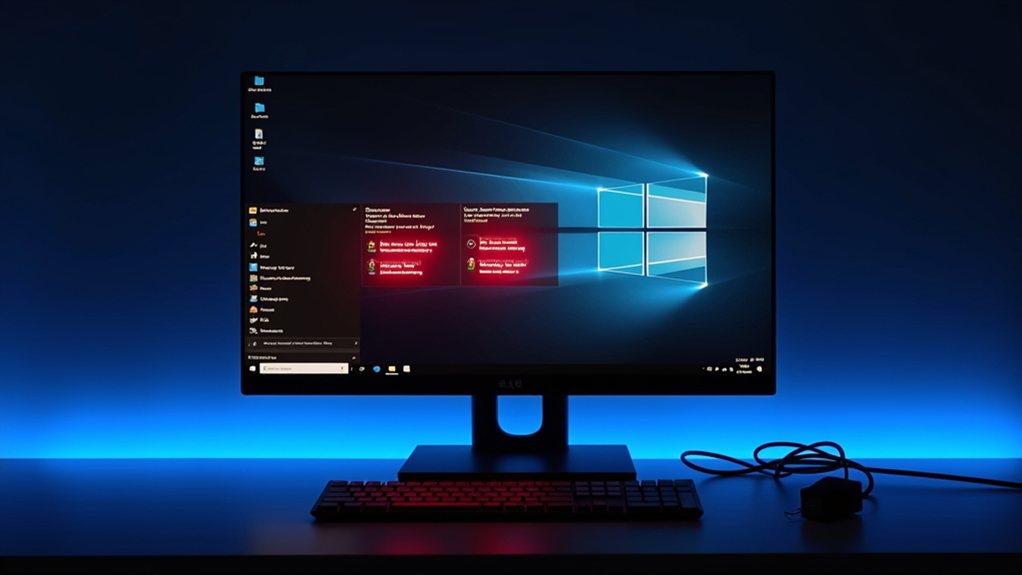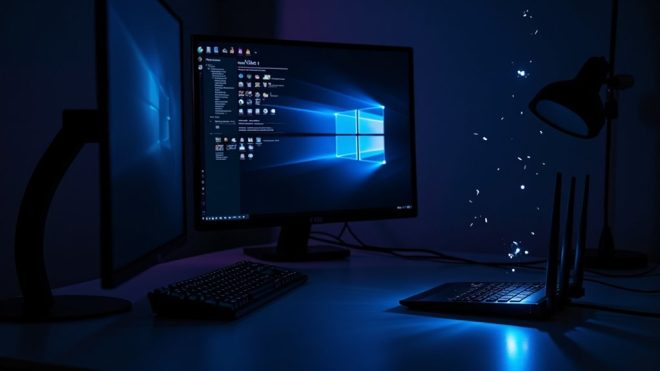Microsoft’s recent Windows 11 update KB5063878 has crippled NDI streaming functionality, with an insider suggesting the feature may face permanent restrictions because of system architecture conflicts. Content creators using OBS Studio report severe performance issues, experiencing slideshow-like quality and audio synchronization problems. As Microsoft acknowledges the crisis, their temporary fix of switching to TCP/UDP protocols has left users frustrated. The future of professional streaming on Windows 11 hangs in precarious balance.

Though Microsoft continues its steady stream of Windows updates, the latest Windows 11 24H2 release brings significant changes to the operating system’s networking capabilities – nonetheless with some unexpected turbulence. The August 2025 security update has introduced severe streaming issues that particularly affect Network Device Interface (NDI) functionality, leaving content creators and broadcasters scrambling for solutions. The Task Manager CPU metrics now provide more accurate performance monitoring for streaming applications.
The troublesome update, identified as KB5063878, has transformed what was once seamless NDI streaming into a stuttering mess of choppy audio and video feeds. Users of popular applications like OBS Studio have reported significant performance degradation, especially when utilising the “Display Capture” feature. It’s like watching a slideshow where someone forgot to sync the audio – not exactly the professional experience content creators signed up for. Microsoft has implemented a compatibility hold on devices with Dirac Audio to prevent audio output loss after the update.
Microsoft’s response to the NDI crisis has been remarkably measured, with the tech giant acknowledging the issue yet offering little more than a promissory note for future fixes. In the meantime, NDI has suggested users switch their Receive Mode from RUDP to TCP or UDP – a band-aid solution that feels more like a step backward than the cutting-edge performance Windows 11 promised.
The timing couldn’t be worse, as Microsoft gears up for its September 2025 security update, which promises an arsenal of AI-powered features exclusive to Copilot+ PCs. These additions, including the new Recall app homepage and an interactive “Click to Do” tutorial, require sophisticated hardware specifications – namely, a Neural Processing Unit capable of 40+ TOPS. Think of it as a VIP club where only the latest Qualcomm Snapdragon, Intel, and AMD processors get past the velvet rope.
For users willing to live on the edge, there’s always the ViVeTool command-line utility, which allows manual activation of features through administrator-level commands. It’s the digital equivalent of jumping the queue, though Microsoft’s staged rollout exists for good reason.
The current NDI streaming crisis serves as a stark reminder that not all updates are created equal. Although Microsoft pushes forward with AI integration and improved security features, basic functionality like smooth video streaming hangs in the balance.
For content creators and broadcasters who rely on NDI technology, the wait for a proper fix feels like an eternity in internet time. As Windows 11 continues its evolution, the question remains: will Microsoft prioritise fixing these fundamental networking issues, or will they remain focused on rolling out flashier AI-powered features?
For now, users affected by the NDI streaming problems can only hope that the promised fix arrives before their audience loses patience with the stuttering streams.
Final Thoughts
Microsoft’s decision to retire Windows 11’s internet connectivity feature signals a major change in the operating system’s approach to network diagnostics. While this may initially disrupt some users’ troubleshooting methods, it aligns with Microsoft’s goal of modernizing core functions. As users adjust to new strategies for managing their internet connections, Computer Repairs Sunshine Coast is here to help. Our expert team can assist you with troubleshooting and optimizing your network settings during this transition. Don’t hesitate to reach out! Click on our [Contact Us] page to get in touch with us today.

